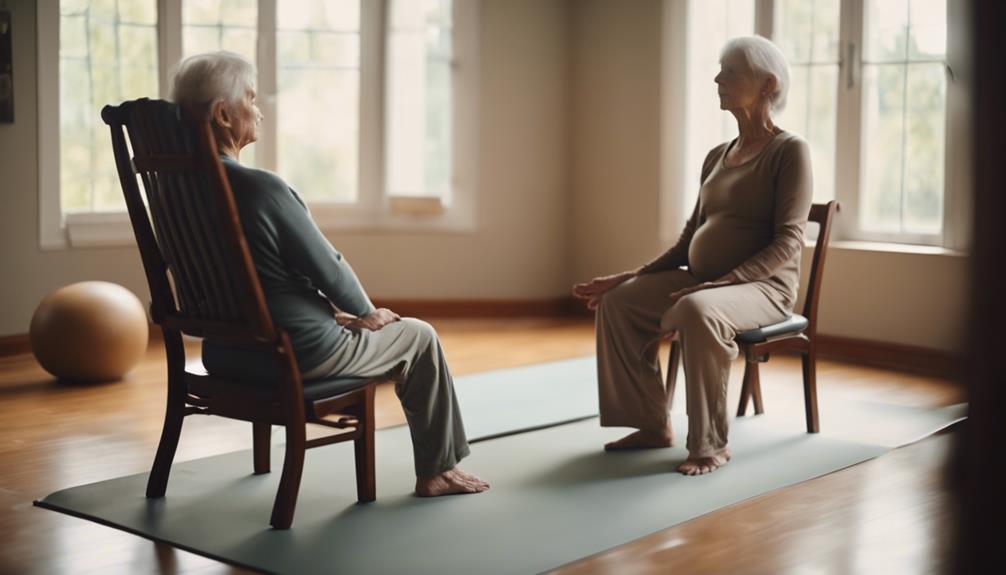Yoga For Seniors

Yoga for seniors is more than just a trend; it’s a holistic approach to maintaining physical health, mental clarity, and emotional balance as we age. As the global population ages, more seniors are discovering the myriad benefits of yoga tailored to their unique needs. In this blog post, we will explore the importance of yoga for seniors, the specific benefits it offers, and practical tips for getting started.
Understanding the Importance of Yoga for Seniors
As we age, our bodies undergo various physiological changes, leading to decreased flexibility, strength, and balance. Yoga for seniors addresses these concerns by promoting body awareness and encouraging gentle movements that can help maintain mobility and independence. Regular practice can combat the physical limitations that often accompany aging, allowing seniors to enjoy a more active lifestyle. Furthermore, yoga cultivates mindfulness, which can improve mental health, enhance emotional resilience, and promote overall well-being.
The Physical Benefits of Yoga for Seniors
One of the most significant advantages of yoga for seniors is its positive impact on physical health. The gentle stretching and strengthening exercises involved in yoga can improve flexibility, which is crucial for maintaining mobility. Improved flexibility can help seniors perform daily activities with ease, reducing the risk of falls and injuries. Additionally, yoga can enhance muscle strength and endurance, promoting better posture and reducing back pain. These physical benefits contribute not only to enhanced quality of life but also to increased longevity.
Enhancing Balance and Coordination through Yoga
Balance and coordination are essential skills that often decline with age, leading to an increased risk of falls. Yoga for seniors incorporates various poses that focus on stability and core strength, helping to enhance these critical abilities. Poses such as Tree Pose and Warrior III can improve proprioception, which is the body’s ability to sense its position in space. By practicing these poses regularly, seniors can develop better balance, coordination, and confidence in their physical abilities, ultimately lowering the risk of accidents.
Mental Health Benefits: Yoga for a Clearer Mind
Yoga is not only beneficial for the body but also for the mind. For seniors, maintaining mental health is crucial, as many face challenges such as loneliness, anxiety, and depression. The mindfulness practices inherent in yoga, such as meditation and deep breathing, can help alleviate these issues. Engaging in yoga encourages relaxation and reduces stress levels, promoting a sense of calm and well-being. Additionally, the social aspect of participating in group yoga classes can foster connections and combat feelings of isolation, contributing to improved mental health.
Breath Control and Relaxation Techniques in Yoga
A fundamental aspect of yoga for seniors is the emphasis on breath control, or pranayama. Learning to regulate breathing can significantly enhance relaxation and reduce anxiety. Simple techniques such as diaphragmatic breathing and alternate nostril breathing can be easily integrated into a senior’s daily routine. These techniques not only promote physical relaxation but also support mental clarity and emotional stability. By incorporating breath control into their practice, seniors can cultivate a deeper sense of peace and resilience in their daily lives.
Adapting Yoga for Seniors: Safety First
When considering yoga for seniors, it’s crucial to prioritize safety and adaptability. Many yoga poses can be modified to accommodate varying levels of mobility and flexibility. Utilizing props such as chairs, blocks, and straps can help seniors achieve the benefits of yoga without overexertion. It’s also essential for seniors to listen to their bodies and practice within their limits. Consulting with a qualified yoga instructor who has experience working with seniors can provide personalized guidance and ensure a safe and effective practice.
Incorporating Yoga into Daily Life
Integrating yoga into daily life doesn’t have to be a daunting task. Seniors can start by dedicating just a few minutes each day to practice. Simple routines that focus on gentle stretching, balance, and breath work can yield significant benefits over time. Whether it’s a morning routine to start the day or a calming practice before bed, consistency is key. Additionally, exploring online classes or local community offerings can provide variety and motivation. Yoga can easily become a cherished part of a senior’s daily routine, promoting not just physical health but also emotional well-being.
Conclusion: Embracing Yoga for a Healthier Future
Yoga for seniors is a powerful tool that fosters physical, mental, and emotional well-being. By incorporating gentle movements, breath control, and mindfulness into their lives, seniors can enhance their quality of life and maintain their independence as they age. The benefits of yoga extend beyond the mat, encouraging a holistic approach to health that embraces the mind, body, and spirit. As more seniors discover the transformative power of yoga, they can embark on a journey toward a healthier, happier future.
In conclusion, whether you are a senior looking to enhance your health, a caregiver seeking ways to support your loved one, or a fitness instructor interested in teaching yoga for seniors, understanding the unique benefits and considerations of this practice is essential. Embrace the journey of yoga, and unlock the potential for a vibrant and fulfilling life in your golden years.What Is Thai Yoga MassageWhen Yoga Day Comes